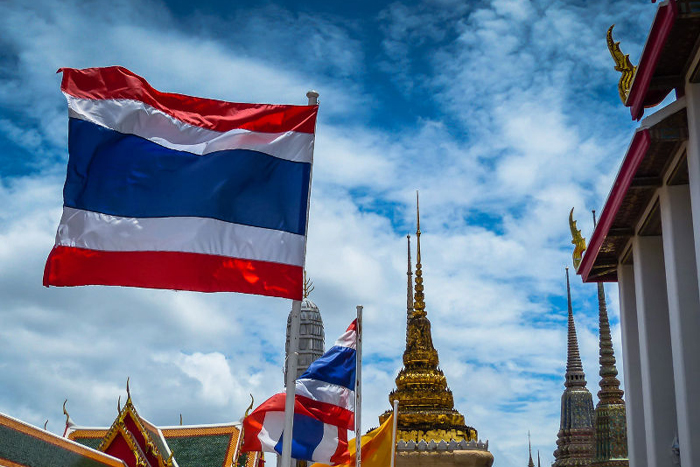Chairman’s Note
Private and Confidential
For SIIA Corporate Members and Advisors
July 2024
China
I write to you as our corporate member and friend to share some points from our visit to China on 19-23 May following an invitation by the Chinese People Political Consultative Conference (CPPCC) – which is sometimes considered the upper house of the People’s Congress. This was the SIIA’s first time re-connecting with China since the pandemic. In meetings with Chinese officials and think tanks, we discussed Sino-American rivalry and its impacts on ASEAN, the South China Sea issue as well as the political transition in Singapore. Our visit to Beijing and Shenzhen also gained from being held in the lead up to the Third Plenary Session, happening on 15-18 July.
There are caveats to the points shared. First, perspectives come from speaking to a limited number of interlocutors, most of whom are close to the government. Secondly, a number of policy positions are known and, on sensitive matters, follow a strict official line; what may be noted is the tone of engagement.
1. Impact of US Actions on ASEAN: China argues that the USA is fracturing ASEAN centrality and threatening regional stability with US-led initiatives such as the Quad and AUKUS. This ties to the broader accusation that the US acts a “bully” on almost every topic, from security concerns to economic and technology issues. As a corollary, China values ASEAN and positions itself as defending ASEAN’s centrality.
2. South China Sea (SCS) and Regional Stability: Our China interlocutors made it clear – they believe their claims in the SCS are well-founded, notwithstanding the arbitration decision against them. They accuse the Philippines of departing from their “gentleman’s agreement” about the 2nd Thomas Shoal as a result of American influence. However, they do not want SCS issues to destabilise relations with ASEAN. China recognises that tensions should be prevented from further escalation or might otherwise dominate and complicate the China-ASEAN relationship and could be used to increase presence of the US military in the Philippines.
3. Cross-straits relations, Post Inauguration: Prospects for dialogue have narrowed further following President Lai’s inauguration on May 20. Beijing did not receive Lai’s speech well and ramped up its media offensive and military exercises around Taiwan. Lack of any mention of the 1992 consensus and reference to Taiwan as the Republic of China are taken as signals of a more pro-independence stance. The CPPCC does conduct exchanges with the Kuomintang (KMT) and other Taiwanese delegations, it seems unlikely for them to engage the DPP.
4. Domestic Doldrums: It was acknowledged that China’s economy is subdued although our hosts cited how some cities show more resilience. Others we met also shared how retail operators continue to struggle, with lower footfall in many locations, and limited purchasing power. Commercial property is also impacted with fewer in-coming foreign investors. Youth showed concern about future livelihood with fewer jobs and constrained wages. In Shenzhen, we felt the outlook was relatively upbeat given its focus on business and technology and on-going commitment to development plans for the Greater Bay Area and links to Hong Kong.
5. Belt and Road Initiative (BRI) Continues: Some tacitly acknowledge rethinking about how to proceed with the BRI, and large, capital-intensive infrastructure projects will be scrutinised more closely and scaled back. However, the commitment continues for high-quality projects with a focus on sustainability and being local community oriented to assist global south development. ASEAN is in focus and the Asian Infrastructure Investment Bank has a strong pipeline of projects for the region.
6. Government Intervention: Beijing better recognises the need for intervention and has begun to utilise more fiscal measures to address economic concerns and boost recovery. Property market measures, announced during our stay in China, are viewed as a first step. Some reflected a quiet optimism for pro-business measures to feature during the upcoming Third Plenum next week. This will set the reform agenda for the next decade and seek to re-open and reassure foreign businesses. Technology will continue to be emphasized to close gaps with the USA, with efforts to push advanced manufacturing capabilities.
7. Singapore Valued: The tone of engagement was positive even where there were points of difference. Both in Beijing and especially Shenzhen, our hosts made effort to emphasize their appreciation for Singapore. They conveyed a very positive view on bilateral ties and that more engagement and investment are very welcome. It was in this context that the CPPCC as part of the political institutions engaged the SIIA.
The Plenum will be held shortly, and I hope these observations might be of some interest to you. If you have a particular interest or perspective to share, I would be glad to hear from you.
Yours sincerely,

Simon Tay
Chairman
![[Premium] Chairman’s Note: China](https://siiaonline.org/wp-content/uploads/2017/04/southchinasea-free-blue-1.jpg)



